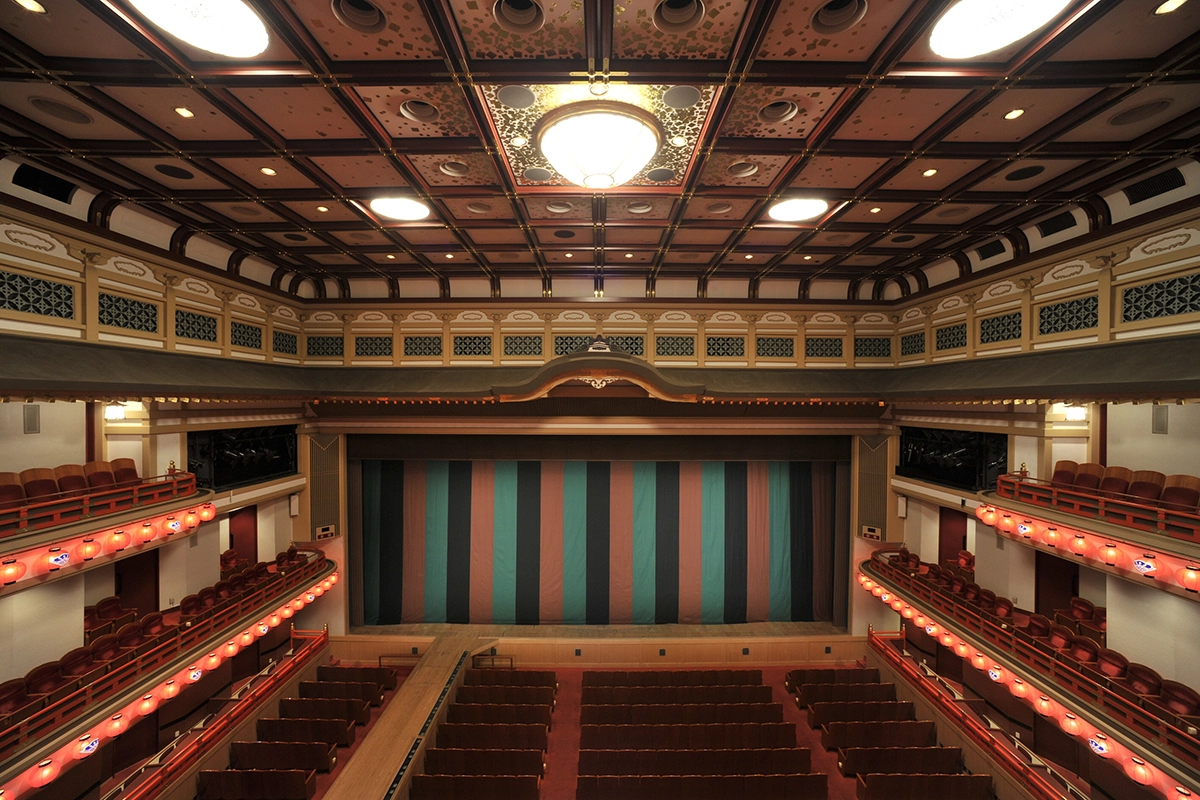Minami-za
南座
Experience the centuries of Kabuki tradition come to life at Minami-za Kyoto.

Call this number
Google Map in English
Google Maps in Japanese
Every trip we make to Kyoto, the lively Gion district calls us back with its deep historical roots and vibrant culture. But there’s one place especially dear to us right at the corner of the Kamo River and Shijo Street: the Minami-za Theatre. This isn’t just any theater; it’s the epicenter of Kabuki in Kyoto, where traditional Japanese drama comes alive. Right near the Shijo Bridge—where we usually find ourselves staying—we’ve walked past Minami-za countless times. Each time we do, we’re drawn to its historic charm and the buzz of excited fans gathering around, especially when big-name Kabuki stars are set to perform.
There’s something magical about the place even before you step inside. The architecture is a feast for the eyes, and standing outside, we often daydream about experiencing a show there, letting the elaborate costumes, dramatic stories, and expressive music of Kabuki sweep us away.
Imagine a theater that dates back to 1610, during Japan’s Edo period. That’s Minami-za for you. Back then, it quickly became a hotspot for the emerging Kabuki scene—a vibrant blend of drama, music, and dance that has captivated audiences for over four centuries. This place isn’t just old; it’s a living piece of history that’s seen generations of spectators and performers alike.
We were struck by the resilience of this place when we heard about its past hardships. The original building was destroyed in a massive fire in 1893, but Minami-za didn’t just rebuild; it reinvented itself. The architect Tokuma Katayama designed a new theater that mixed traditional style with modern tech, including top-notch sound and lighting, ensuring that every performance was both a nod to the past and a leap into the future.
Just walking past Minami-za, you can almost feel the presence of the many legendary actors who’ve graced its stage. It’s like the walls themselves are steeped in stories of epic performances that have left their mark on Japanese theater. This place is more than just a stage; it’s where legends come alive.
Recognized by the Japanese government as a crucial piece of cultural heritage, Minami-za isn’t just a theater; it’s a living museum of tradition and artistry. Yet, it’s always been open to new twists on classic performances, making it a perfect blend of the historical and the contemporary.
Nowadays, Minami-za continues to pull in crowds, and stepping inside is like traveling back in time. The wooden beams, the meticulous craftsmanship of the decor—it’s all part of the experience. The theater uses modern technology to enhance the shows, making sure that every performance isn’t just seen but felt.
For anyone who loves the arts, spending an evening at Minami-za is like stepping into another world. Every show is a journey through time, with scenes that bring the rich history of Kabuki to life. It’s not just an outing; it’s a deep dive into a world where the drama of yesteryear meets today’s storytelling magic.
We always tell fellow travelers to Kyoto to make sure they visit Minami-za. Whether you’re an arts buff or just curious about Japanese culture, the theater offers a profound connection to the country’s artistic traditions in an incredibly vibrant and immersive way. As past performances echo in its halls alongside today’s shows, Minami-za stands as a beacon of theatrical art, celebrating Kabuki’s enduring appeal.
And hey, while you’re there, do try the famous Nishin Soba—apparently, it’s a hit with the Kabuki actors for a quick tasty bite between their scenes. For us, it’s these little gems—the food, the architecture, the buzz of the crowd—that make our visits to Minami-za unforgettable parts of our travel logs. It’s these experiences that stick with us, painting a picture of Kyoto that’s as flavorful and vivid as the performances on stage.
Contact us at [email protected], or click here to use our contact form.
Submission successful. You will receive a confirmation email, shortly.